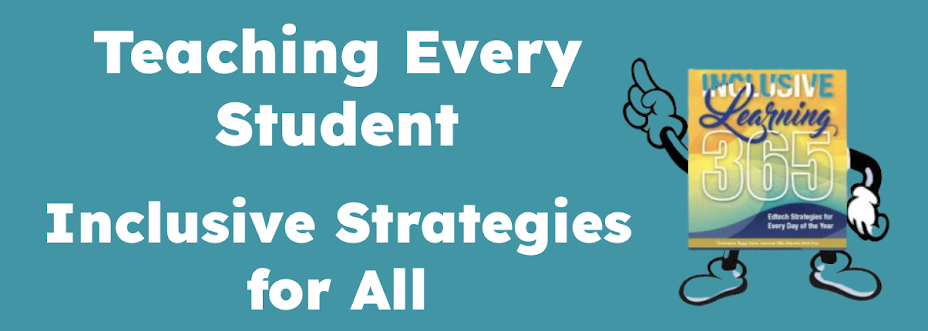This week I was in a high school Learning Center Support classroom and noticed a student reading from his personal Kindle Fire. The LC teacher mentioned to me that the student preferred reading on the Kindle device.
Since I'm always hoping to learn from students, I asked the student why he preferred reading from his Kindle. He told me he liked being able to increase the font size; it made it easier for him to read the text.
Moral of the story - it's the little things that count. I often hear adults state they can't read from a device, they need the feel of the book in their hands. That may work for you but it's not always the best method for your students. Just because you or I might prefer a different presentation doesn't mean it works best for our students.
This is one of the principles of UDL, in this case, multiple methods of presentation. The material was now presented in a form that worked best for this particular student.
Another BYOD success story.

2 comments:
That's really great to hear! I remember not too long ago when I was in High School, you would get so criticized for having a phone out, or something to that effect. In belief that you may cheat on a test and so on...But now-a-days, items as such are much more common to be used in classrooms and have more purpose than just to cheat. It's to help the student in general with their education. By adding usability in more ways than one that cater to the child's needs. This could actually be used to deter some of the issues children may have with learning and so on.
-Andrew I.
I work in a high school and have seen a few students reading a book on the kindle. Along with the large font size, some books also have audio to accompany them. For the student who has difficulty with reading, the audio version is extremely beneficial. The student just needs to bring in his or her own headphones. These electronic devices also allow for highlighting, and allow for quick reference for the definition of a word. A student using an electronic device is more likely to look up the definition of a word with the click of a button than a student who is reading from a book who has to go to a computer or dictionary to look up the meaning.
Allowing students to use the medium that they learn best from is also a part of differentiated instruction. As teachers we should always provide our students with different avenues to acquire content. Our teaching materials must allow for all the students in the classroom to learn effectively.
Unfortunately the cost of kindles probably doesn't allow for many school districts to purchase them. So unless your students have their own personal devices, or the teacher is willing to allow students to borrow theirs, many students will not have the benefit of using them.
I'm glad to see that teachers are becoming more accepting of technology in the classroom. Those teachers from older generations seem to have more difficulty with technology, but it is here to stay. Better we embrace the new advances in technology and use it to our benefit than to push it aside.
Kitt
Post a Comment